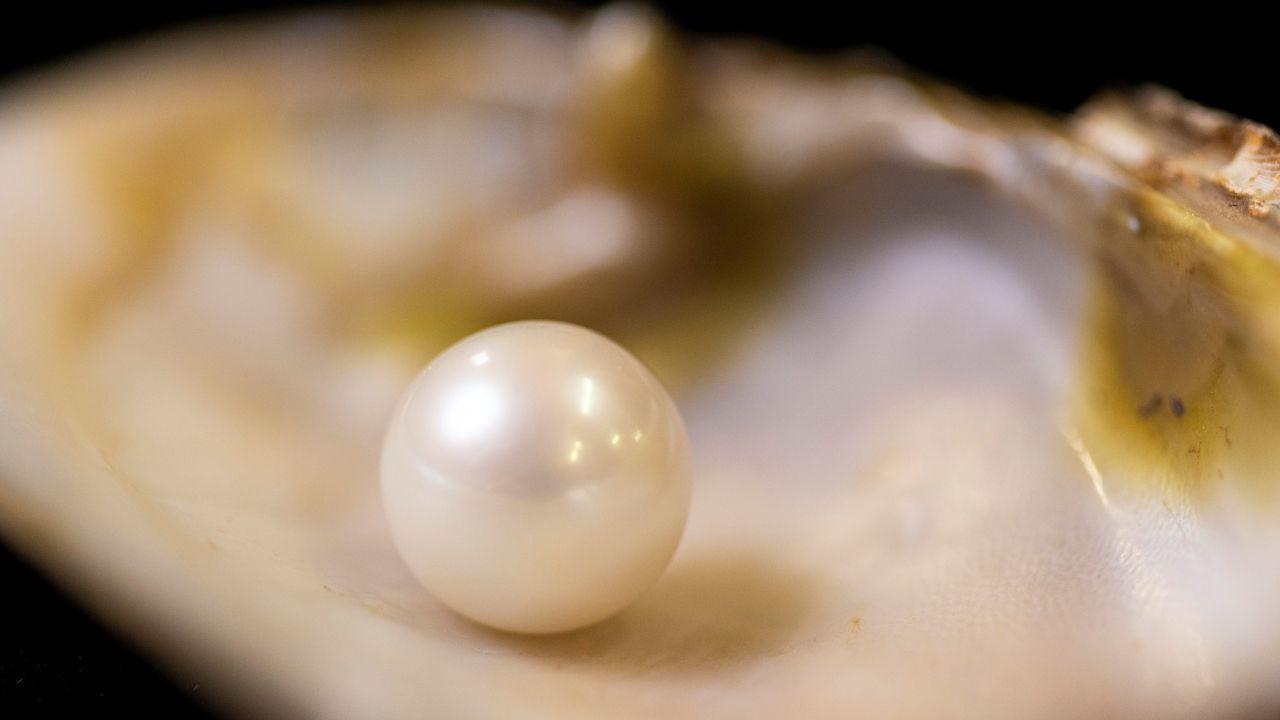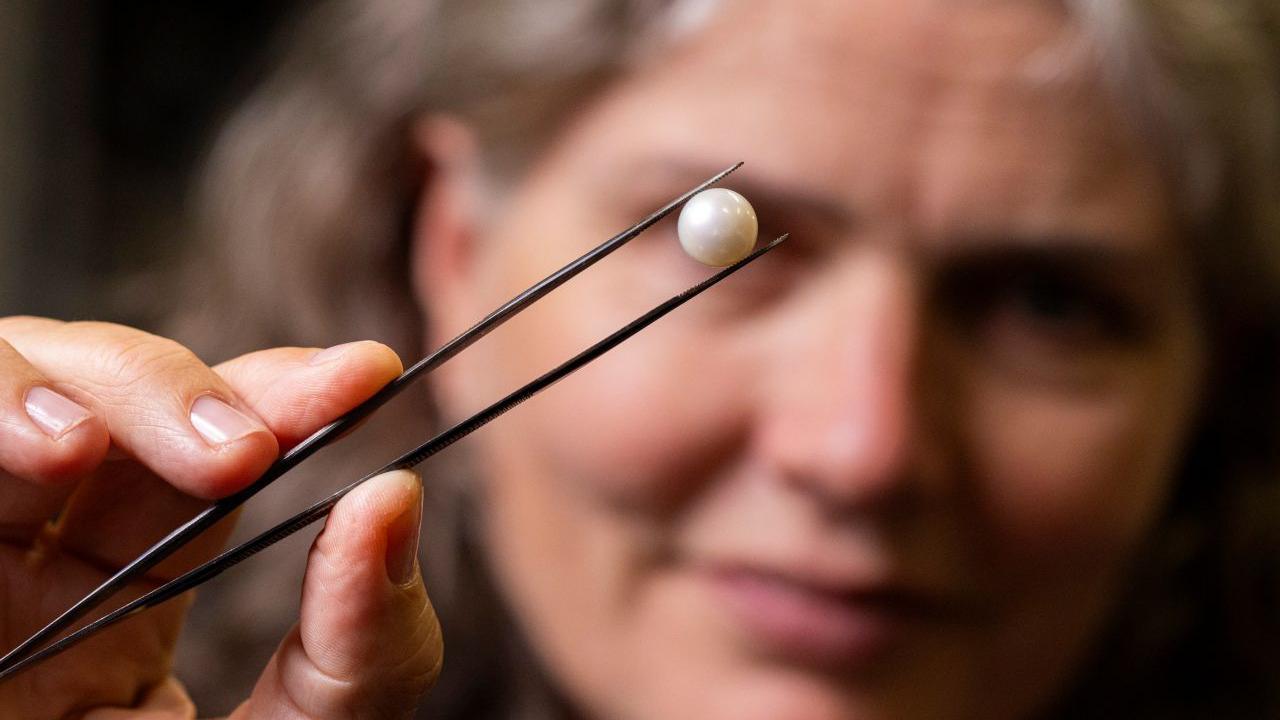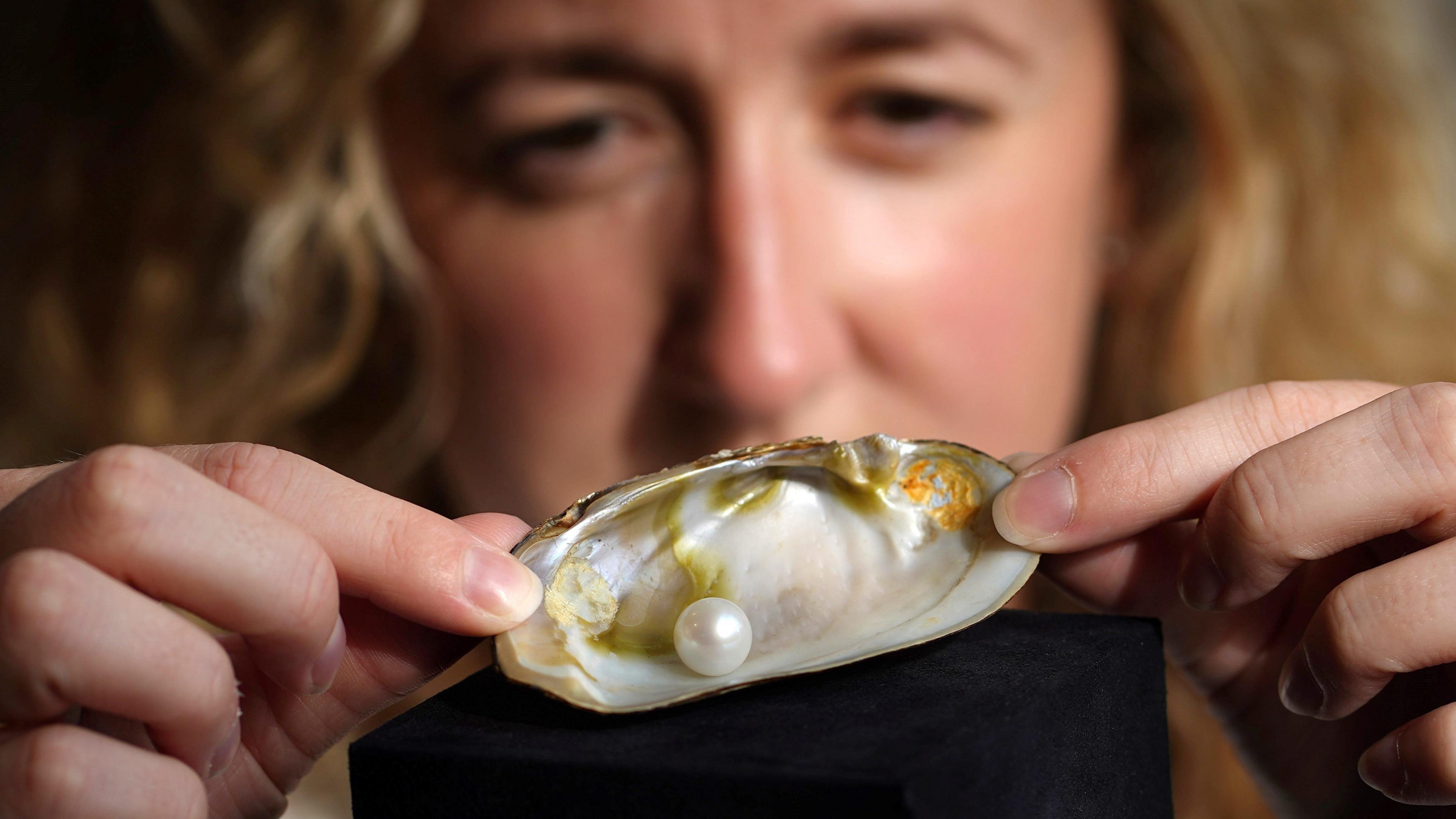'One of a kind' Abernethy Pearl goes on display

The Abernethy Pearl was discovered inside a mussel near the River Tay in 1967
- Published
A "one of a kind" freshwater pearl that is the largest found in Scotland for more than 400 years has gone on display at the National Museum of Scotland (NMS).
The Abernethy Pearl was discovered inside a mussel near the River Tay in 1967, and is named after its finder William Abernethy.
It has been donated to the Edinburgh museum by retired jeweller and NMS volunteer Alistir Wood Tait who bought the pearl last year at auction for almost £94,000.
Measuring 11mm in diameter and weighing 43.6 grains, the perfectly round freshwater pearl is the largest found in Scotland since the 1621 discovery of the Kellie Pearl, which is set in the Scottish Crown.

The perfectly round Abernethy Pearl has been described as "a thing of beauty"
Mr Wood Tait said it was the finest pearl he had seen in his 40-year career.
He said: "Unlike so many freshwater pearls, it's perfectly spherical, and when the light hits it, it has a wonderful pinkish iridescence.
"I'm delighted that it will remain in Scotland and is on permanent display in the National Museum, where as many people as possible will have the chance to see it."
The "rare and unusual specimen" would have taken about 80 years to reach its full size, something Rachel Walcott, principal curator of earth systems at NMS, said would not be possible today.
She said: "It's a thing of beauty, but it also highlights the impact of the biodiversity crisis.
"Pearl fishing was once a very important export industry but the populations of mussels in Scotland have been decimated.
"We simply wouldn't have 80 years of undisturbed water in Scotland today for a pearl of this size to be created. It's one of a kind."
Scotland’s last pearl fisherman Bill Abernethy (Video by Graham Fraser)
Pearls are created when an irritant such as a parasite or a grain of sand gets inside a mussel or oyster.
Thin layers of aragonite, a form of the mineral calcium carbonate, and an organic substance called conchiolin, are built up around the irritant, which eventually creates the pearl.
Ms Walcott said that between 1970 and 1998, when a ban on all pearl fishing in Scotland came into force, pearl mussels were becoming extinct at a rate of "two rivers or tributaries a year".
Mr Abernethy, who died in 2021 aged 96, never disclosed the exact location of the rare find.
Ms Walcott said the Abernethy Pearl is notable not only for its size but also its beauty.
"It's actually perfectly formed, whereas often river pearls are what they call baroque, a bit wobbly, and they can often be brownish or striped," she said.
"So to get something that big and something that beautiful pinky-white colour, certainly in freshwater pearls in the northern hemisphere, is very, very special."
Related topics
- Published21 August 2024
